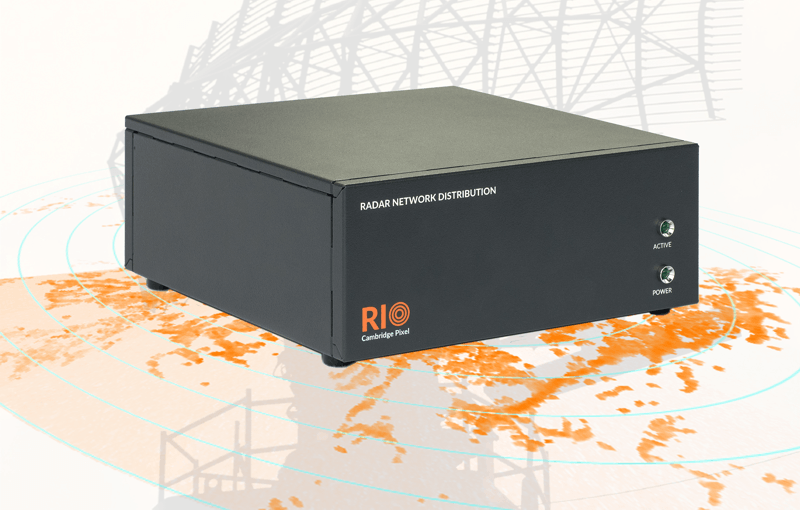- RIO system range offers radar signal conversion and processing within compact package
CAMBRIDGE, United Kingdom, November 3rd, 2016 - Cambridge Pixel (www.cambridgepixel.com), an award-winning supplier of radar display, tracking and recording subsystems, announces its RIO range of compact radar processor units. The units embed Cambridge Pixel's field-proven radar acquisition and processing components into compact, self-contained desktop systems to provide a range of useful data conversion functions.
RIO units may be used to convert between radar signals and network video, including radar signals to network, network to radar signals, and radar tracks to radar video.
RIO RadarNet, for example, is a desk-top unit that interfaces to standard radar signals, including video, trigger and azimuth signals, and converts the information to standard ASTERIX CAT-240 which is output through a network connector on the rear of the unit. Processing modules may be enabled for filtering, area blanking, thresholding, interference suppression and north-referencing from NMEA navigation data. Radar video may also be recorded onto an external USB drive. A significant amount of capability and flexibility is accommodated in a compact unit, which requires no external screen or keyboard to operate.
All RIO units may be configured, and if desired controlled, from a network browser. The browser may be used to pre-configure the unit for autonomous operation, or may be used to monitor the activity of the box, including options for visualising the radar data and initiating the recording.
Other models in the range include:
RIO RadarNet - Takes in radar signals (video, trigger, azimuth) and converts to ASTERIX CAT-240. The box provides a range of radar processing functions including filtering, area masking, interference suppression, NMEA heading adjustment, radar compression and optionally recording to an external USB drive.
RIO NetRadar - Takes in ASTERIX CAT-240 network radar and converts back to radar signals. This may be desired when interfacing network radars to legacy consoles that expect analogue radar signals.
RIO TrackNet - Takes in ASTERIX CAT-48 or CAT-10 track data and creates ASTERIX CAT-240 as an output. This may be used to create synthetic network radar video from existing track reports.
RIO TrackRadar - Takes in ASTERIX CAT-48 or CAT-10 and creates radar signals as an output. This may be used to create synthetic radar video signals from existing track reports.
RIO RadarTest – Provides a simple desktop radar signal generator that output radar signals as video, trigger and azimuth, or ASTERIX CAT-240, based on a number of built-in test patterns. This provides a useful test bench to validate equipment expecting to receive radar signals.
Found this interesting? Please share it with your network:



